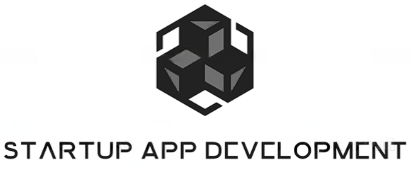Developing an app is a significant milestone, but getting it approved by the App Store can feel like the final hurdle. Many developers find themselves asking how long this process will take. In this FAQ, we’ll break down the app approval process for the App Store, explore average timeframes, and share tips on how to streamline your experience.
Understanding the App Store Review Process
To successfully launch your app on the App Store, understanding the review process is crucial. Apple employs a stringent set of criteria to maintain its high standard of app quality, ensuring users have access to reliable and secure applications. This review process not only examines technical aspects like functionality and security but also evaluates the user interface and overall user experience. By adhering closely to Apple’s regulations and guidelines, developers can ensure a smoother submission process and increase the chances of their app getting approved promptly.
Apple’s carefully structured guidelines are designed to foster innovation while ensuring safety and usability. These guidelines cover a wide array of requirements, from compatibility with the latest iOS versions to compliance with Apple’s content policies. Understanding these guidelines beforehand and integrating them into your app design can help prevent common pitfalls that often lead to rejection or delays in the review process. By thoroughly preparing your app to meet these stringent standards, you set a solid foundation for successful approval.
Factors Influencing Approval Time
Several factors can influence how quickly your app gets approved. For instance, the complexity of your app’s functionality may require more rigorous testing, which could extend the time taken for approval. The clarity and simplicity of your user interface also play a pivotal role, as apps with straightforward designs aligned with Apple’s Human Interface Guidelines generally face fewer hurdles during the review process.
Apps submitted during peak periods, such as around major iOS updates or the holiday season, may also experience delays due to increased submission volumes. Staying ahead of developments in iOS and aligning your app updates accordingly can mitigate these delays. Additionally, close adherence to Apple’s content policies will ensure your app isn’t automatically rejected for guideline breaches, allowing for a more seamless approval journey.
Understanding the scope of what might influence your approval time frame can allow you to better plan your app launch. For example, consider the resources available through Apple’s Developer Program, which offers tools and forums to help streamline development and testing processes, potentially expediting your path to app approval.
Average Timeframe for App Approvals
Generally, the app approval process on the App Store takes about one to two days. However, it’s important to note that this timeframe can vary. Factors like the current volume of submissions, the thoroughness of your app’s testing, and adherence to guidelines play a significant role in determining the exact duration. As of August 2024, with more than 600 apps submitted daily, the average approval period spans between 24 to 48 hours.
While most apps tend to fall within this range, complex or particularly novel apps may require a more extended review period due to their unique nature, necessitating additional scrutiny from Apple’s review team. As such, it is wise to incorporate potential delays into your app’s launch plan to avoid unexpected setbacks and ensure a well-timed release.
Common Reasons for Delays
A lack of compliance with Apple’s rigorous standards is a prevalent cause of delay. Common issues include non-compliance with user privacy standards or security breaches, as well as failing to meet technical criteria specified in the Human Interface Guidelines. Any submission containing inappropriate content or a lack of functionality and stability is also at risk of an extended review process.
Another typical reason apps face delays is the lack of proper metadata, such as app descriptions and keywords. Properly curated and accurate metadata not only influences discoverability but also aids Apple’s review team in understanding the app’s purpose, functioning, and suitability.
Therefore, staying detail-oriented and prioritizing compliance throughout your app’s development is crucial in ensuring an efficient entry into the App Store. For additional guidance, explore detailed recommendations on how to avoid common pitfalls during development. Being proactive in your approach can significantly minimize the potential for rejections or prolonged feedback cycles.
Tips to Expedite the Approval Process
Expediting your app approval involves meticulous preparation and a keen eye for detail. Start by thoroughly reviewing Apple’s developer documentation, ensuring that your app strictly adheres to their guidelines, including design, functionality, and security protocols. Pre-submission checks and comprehensive testing on real devices help catch and rectify issues early.
Using tools available through Apple’s Developer Program, such as beta testing with TestFlight, can facilitate valuable user feedback before your official submission. This program provides access to a comprehensive suite of resources that streamline the development process, offering tutorials and valuable insights on optimizing app performance.
Additionally, strategically scheduling your app’s submission during less crowded periods and ensuring your app’s metadata is complete and precise are effective tactics. By taking these steps, your app will not only be primed for success but stand a better chance of a swift review and favorable approval outcome. Consider visiting our homepage for professional guidance and support to smoothly bring your app to market.
Bringing Your App to Users
Getting your app approved on the App Store may seem daunting, but with the right preparation and understanding of the process, it can be a smooth experience. By following these guidelines and being mindful of potential challenges, you can get your app out to users quickly and efficiently.


